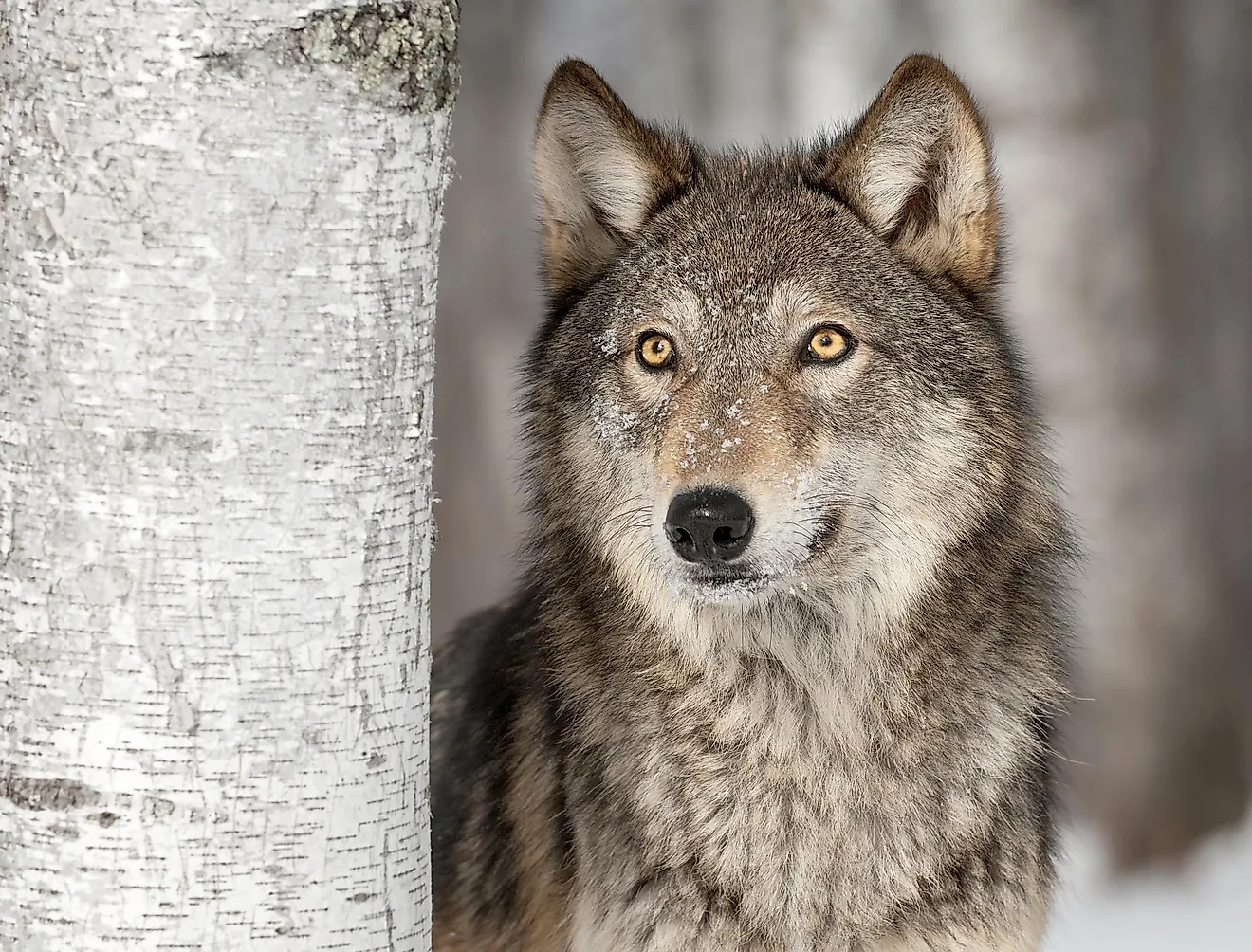The Gray Wolf: Animals of North America

5. What Are Gray Wolves?
The Gray wolf (Canis lupus) is said to be the largest member of the family to which the common dog belongs, Canidae. The genus name, Canis, is a Latin word that means “dog”, and lupus the Latin word meaning “wolf”. The Latin classification translated to English becomes “dog-wolf”. We use the name “gray” to describe all of the canine sub-population, although the color gray may not be a predominant color among all of its members. Gray wolves are typical canines with a long bushy tail that is often black-tipped. Their coat colors are usually a mix of gray and brown with unique facial markings. Color can vary greatly, from white to brown, and even black. Gray wolves are large and heavy in comparison to their close wild cousin the Coyote, or “Golden Jackal”. The gray wolf's legs are generally longer than those of other canines, a trait which allows them to more easily overcome deep snow. Depending on the subspecies of the gray wolf, their sizes range greatly across both sexes as well. Throughout the typical range, female gray wolves weigh between 40 and 120 pounds, and measure 4 to 6 feet in length. The adult males are slightly heavier, measuring 5 to 6.5 feet in length. Their heights at the shoulder, when standing on all four legs, ranges from 28 to 30 inches.
4. What Do Gray Wolves Eat?
Gray wolves are carnivores, and they often source their food by scavenging or stealing prey from other predators. They prefer to eat large hoofed mammals, such as deer, bison or moose, but you may also find them hunting smaller animals as well. Impressively, an adult may eat as much as 20 pounds of meat in a single meal. In a zoo, wolves are often fed with dog kibble or cuts of meat.
3. Where Do Gray Wolves Live?
According to the International Wolf Center, the estimated population of gray wolves in Alaska is between 7,000 and 11,200, around 3,700 in the Great Lakes region, and around 1,675 in the Northern Rockies. The gray wolf population in these regions has remained stable since government efforts have been made to protect them. The Gray Wolf is classified as an endangered species by the US Fish and Wildlife Services, largely due to environmental changes and other consequences of human interference within their habitats. The belief that wolves are dangerous to humans is one of the threats these species are facing. This fear and misunderstanding poses a great threat to wolves as people often kill them out of unfounded fears. The most common threat to a wolf’s life in populated areas is a conflict with people over killing their livestock, which often results in the hunting and trapping of them by farmers and ranchers.
2. How do Gray Wolves Live?
Gray wolves are highly adaptable to most habitats, whether those places be arctic tundra, woodlands, grasslands, or deserts. They fare well when there is an abundance of snow, a condition which is conducive to their hunting of prey. During the Autumn and Spring periods, they are more active, and tend to lie out in the open more often.
1. How Do Gray Wolves Reproduce?
The gray wolf is typically monogamous, and a mated pair will remain together for life unless the other mate dies. In North America, they usually breed from late January until March. Gray Wolves are usually pregnant for around 62 to 75 days, and tend to give birth to 4 to 6 pups per litter. The newborn pups are born blind and deaf, and the pack cares for the pups until they are around 10 months of age. At this time, they are usually agile enough to care for themselves and flee from danger.











